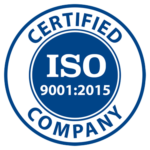Harnessing The Protective Power
of Anti-Wear Additives
Base oils can’t do it alone. Base oils serve as the foundation of all lubricants used in automotive products, including engine oils, transmission and gear lubricants, and greases. But base oils need the help of additives to maintain the proper viscosity for lubrication, improve performance, prevent contamination, avoid chemical breakdown, and protect engine parts.
The properties of base oil determine how they are used. It’s the additive technology that makes all the difference, reacting with the base oil in three possible ways:
- Enhance existing base oil properties
Examples: corrosion inhibitors, demulsifying agents, antifoam agents, and antioxidants - Suppress unwanted base oil properties
Examples: Viscosity index (VI) improvers and pour-point depressants - Create new base oil properties
Examples: Extra pressure (EP) additives, metal deactivators, tackiness agents, and detergents
Depending on the application, up to 30% of formulated oil volume typically consists of additives. How do you know which additive is best for your application? This blog delves into one anti-wear additives (AW additives), helping you understand their protective power.
What Are Anti-Wear Additives?


AW additives are most commonly added to hydraulic oil, engine oil, and gearboxes. Anti-wear additive labels typically include the AW classification, followed by the viscosity. For example, hydraulic oil with an anti-wear additive will be displayed as AW46.
What Are The Types of Anti-Wear Additives?
All AW additives reduce abrasive tool wear and make the machining process easier. There are several widely used AW additives.

Using AW additives increases exposure potential and possible health effects. Make sure to follow all material safety data sheets to handle handle these products properly.
- Zinc Dialkyldithiophosphate (ZDDP)
- Sulfur
Like ZDDP, Sulfur is a common anti-wear additive in hydraulic fluids and is used for its oxidative properties and lower sludge-forming tendencies. However, sulfur AW additives should not be used with copper components due to their potentially corrosive effect.
- Tricresyl-Phosphate (TCP)


